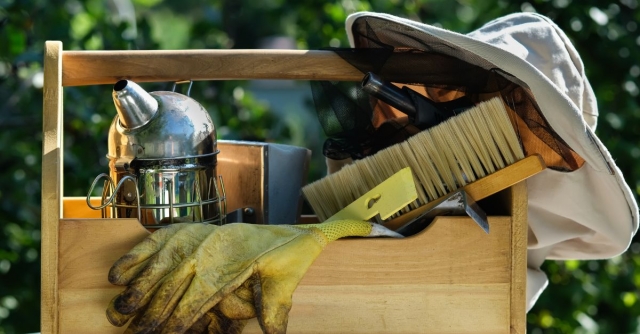Starting your journey into beekeeping can feel overwhelming when faced with countless equipment options and varying advice from experienced apiarists. Understanding which tools genuinely matter versus those that simply drain your budget is the step between a thriving first season and costly mistakes. The right equipment not only protects you but also ensures your bees can flourish under your care. Discover the essential beekeeping tools every beginner should have, forming the foundation of successful hive management, keeping your bees happy and healthy all year.
Start With Protective Gear
A high-quality bee suit with an attached veil provides comprehensive protection while allowing comfortable movement during hive inspections. The fabric should be smooth enough to prevent bee stingers from penetrating while remaining breathable for extended periods of work.
Leather gloves also offer excellent sting protection, though many experienced beekeepers eventually transition to lighter alternatives for improved dexterity. Ultimately, your choice depends on your personal comfort levels and local bee temperament.
Hive Tools for Management
The humble hive tool serves as your primary instrument for prying apart frames, scraping excess wax, and manipulating hive components. A standard J-hook hive tool provides excellent leverage for separating frames cemented together with propolis, while the flat end is helpful for cleaning hive surfaces.
Consider investing in both a standard hive tool and a pry bar-style tool for different situations. The pry bar excels at lifting heavy supers, while the J-hook design offers superior control when working individual frames.
Housing Your Colonies Properly
Choosing the right bee box for your colony requires understanding the fundamental differences between hive styles and their practical implications for management. Langstroth hives dominate modern beekeeping due to their standardized frame sizes and modular design that allows easy expansion as colonies grow throughout the season.
Top bar hives, on the other hand, appeal to beekeepers seeking more natural comb construction, though they require different management approaches and offer limited expansion options. Regardless of style choice, ensure your hive bodies are constructed from high-quality materials that can withstand local weather conditions for multiple seasons.
Smoking Equipment for Calm Inspections
A reliable smoker transforms potentially stressful hive inspections into manageable routine maintenance. The device works by triggering the bees' natural fire response, causing them to gorge on honey rather than defend their territory aggressively. Look for high-quality smokers that maintain consistent smoke production throughout extended inspections without requiring constant relighting. Make sure you practice lighting your smoker before your first hive inspection to avoid fumbling with equipment while surrounded by thousands of bees.
Building Your Beekeeping Foundation
Success in beekeeping stems from understanding your equipment thoroughly rather than accumulating every available gadget. Start with these fundamental tools and learn how to use them properly before expanding your collection.
These essential beekeeping tools every beginner should have are your gateway into a rewarding hobby that connects you directly with nature's most fascinating insects. Take time to source quality equipment, practice with your tools before working live hives, and remember that confident handling creates calmer bees and more enjoyable beekeeping experiences.






